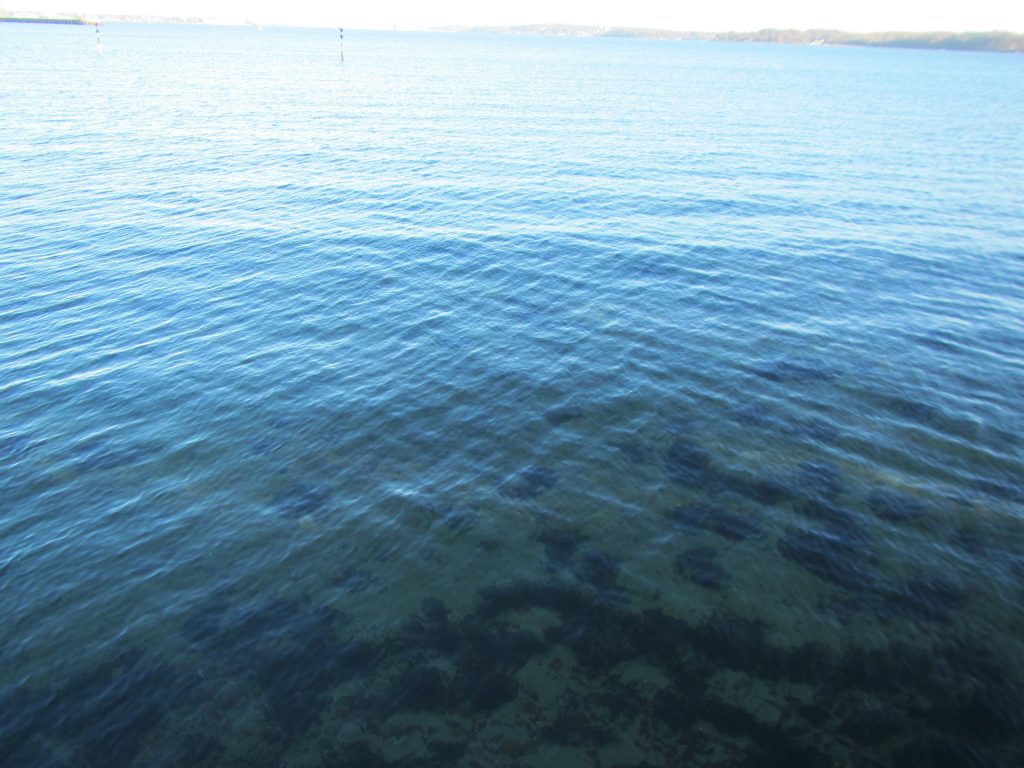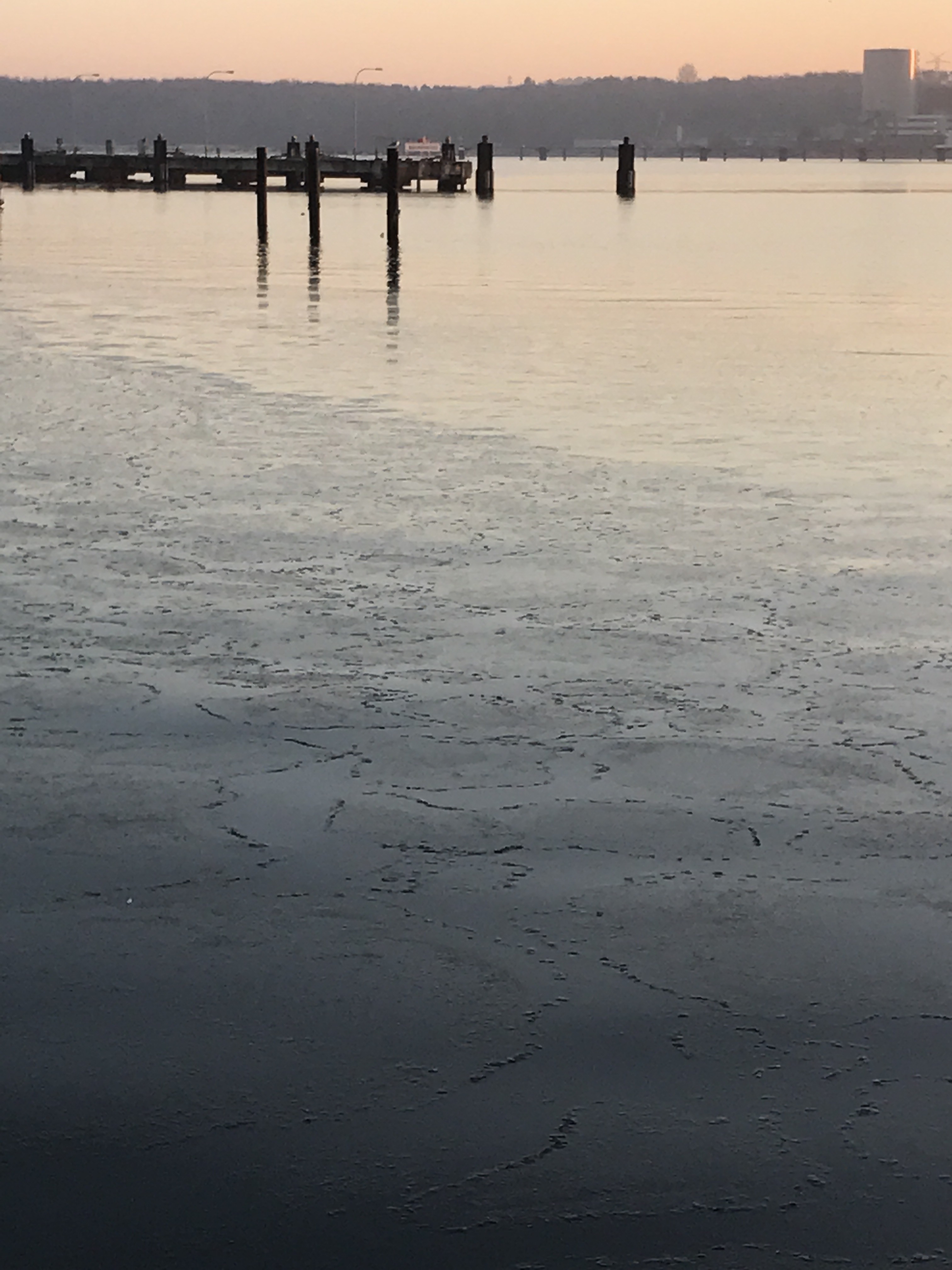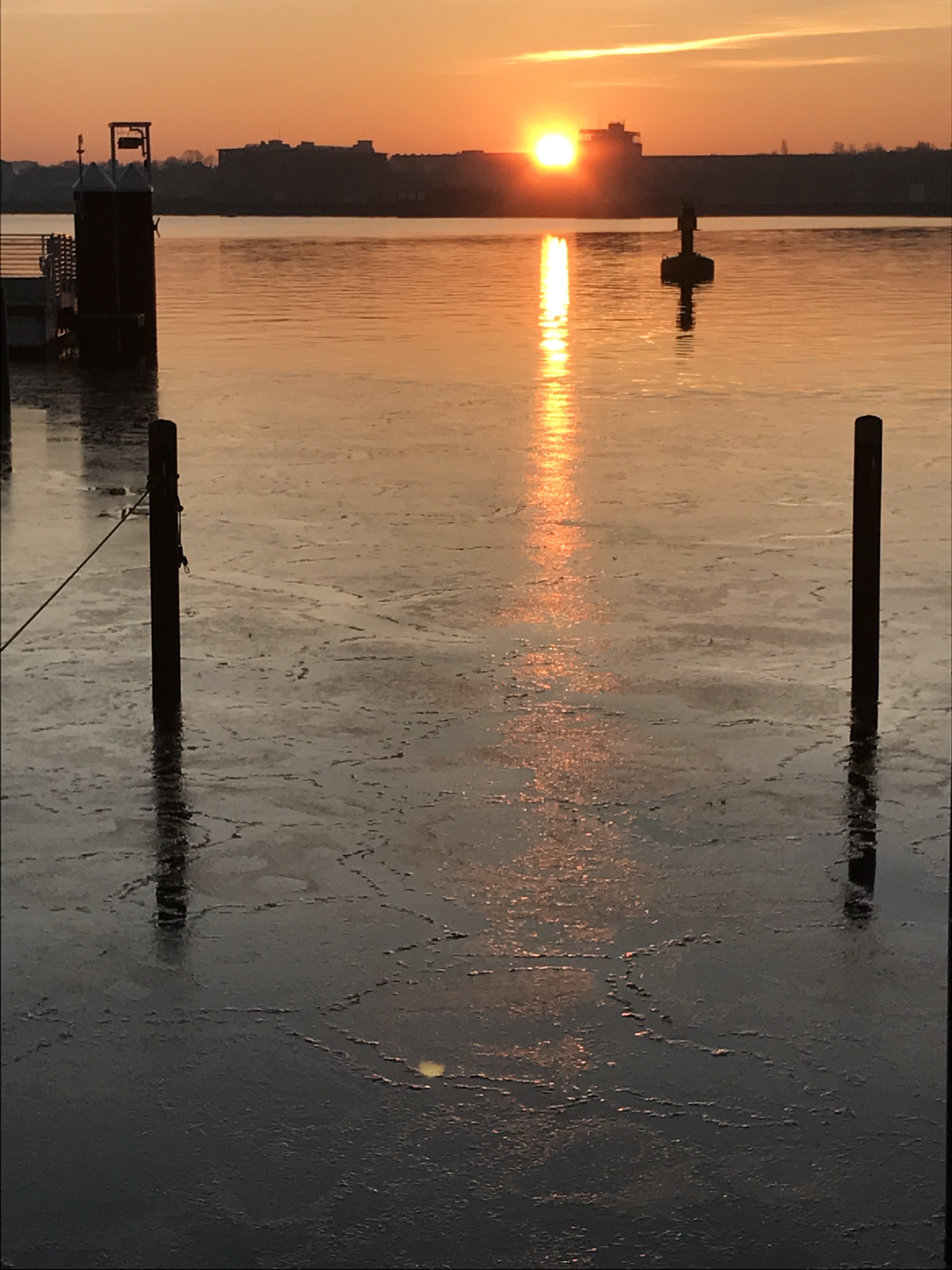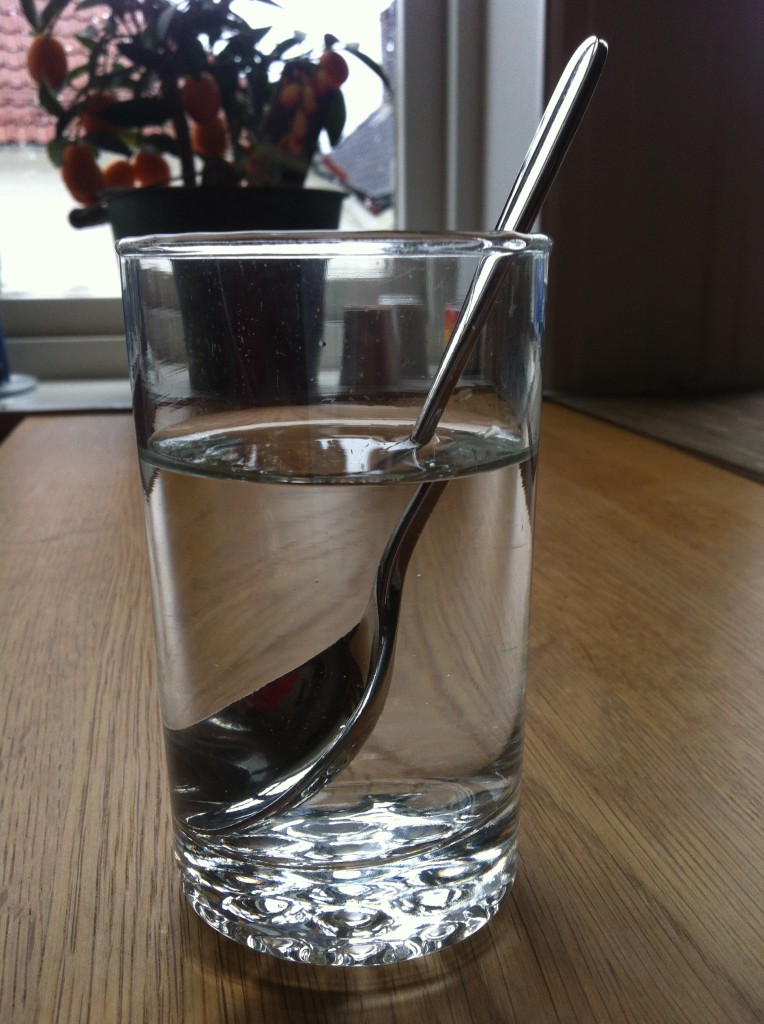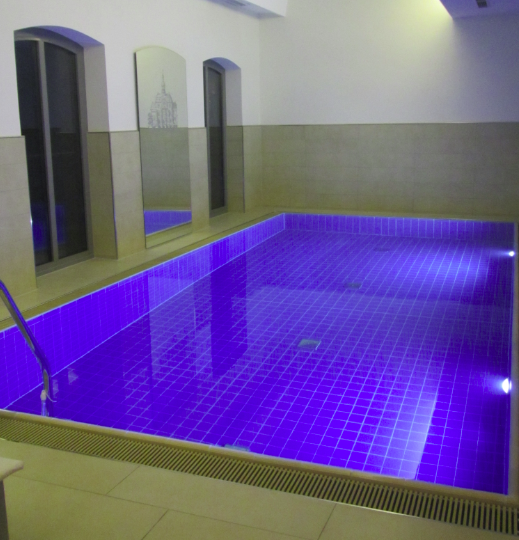…because they follow the coastline so nicely and I still don’t understand what’s going on there…
Category Archives: observation
Ice and waves
Waves going through very fresh, still flexible ice. What an exciting topic :-) We had a first look at the picture below in the last blog post already, when we looked at stages of ice formation. Can you see how the pancakes are deformed by waves going through?
It’s a little more difficult to see in the picture below, where a storm drain drips into the fjord. Can you make out how the wave rings are spreading through the thin ice?

And one thing that I found super fascinating was that ducky ice-breaking: You see the open water bit just behind it, and there are a lot of waves. But then you also see those waves spreading into the ice! Poor ducky must have put a lot of energy into this…
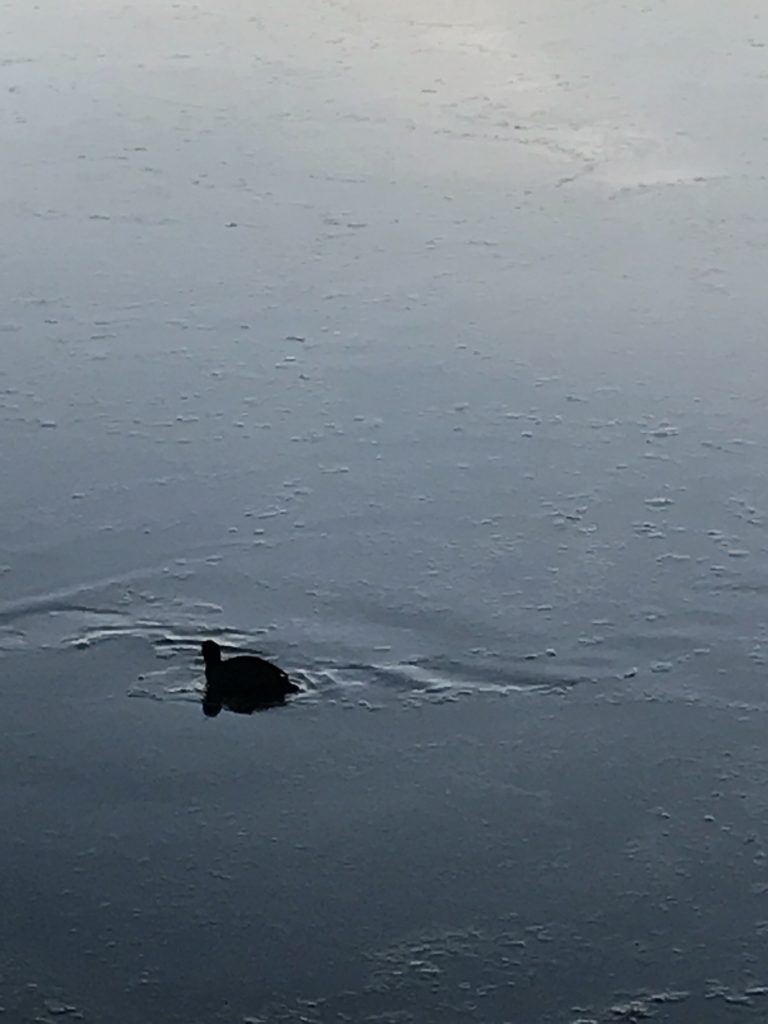
My favourite picture, though is the one below: A crisscross of waves and an ice floe that moves (obviously) with both wave fields!
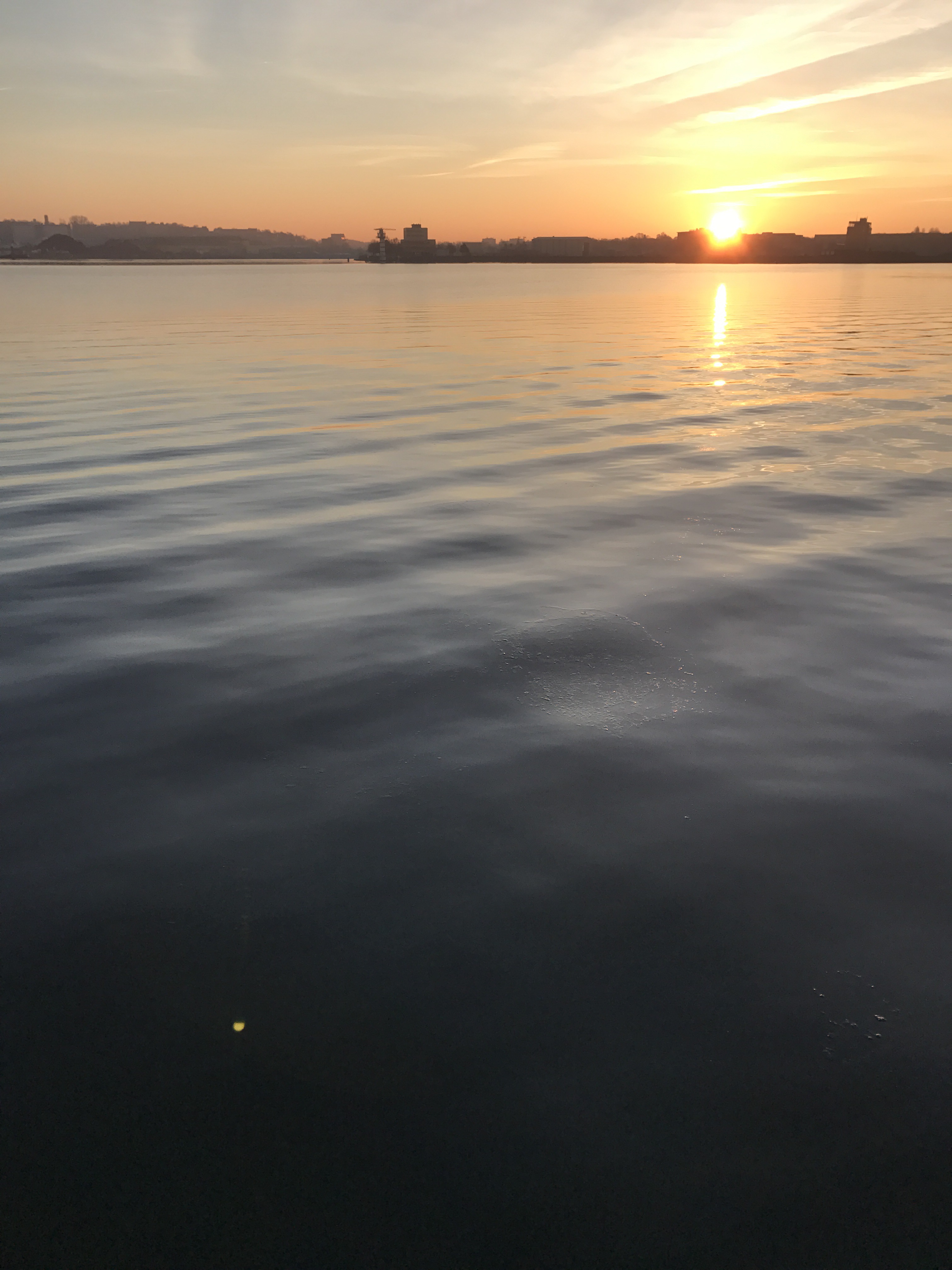
This even works if there is more ice than just one lonely flow:

How awesome is that??? :-)
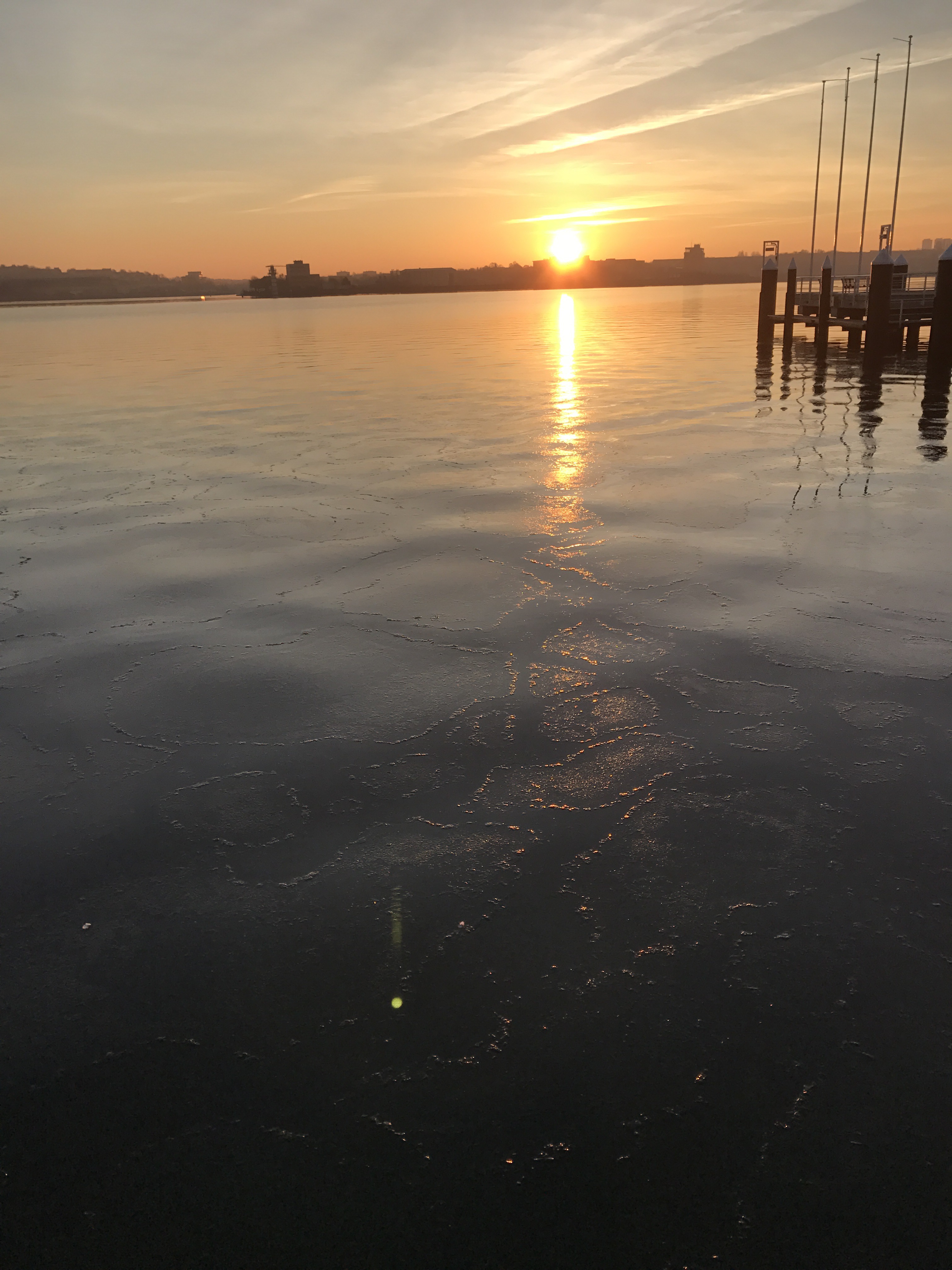
Ice forming on Kiel fjord
One thing I really like is watching ice form. Well, maybe not watching the actual freezing (don’t have the attention span for that) but looking at all the different stages.
At first, you have all the small, individual needles that still slush around.

Then, the needles start sticking together, and if there is a little wave action, the ice breaks apart into individual pancakes, which bump into each other and start piling up along the edges.
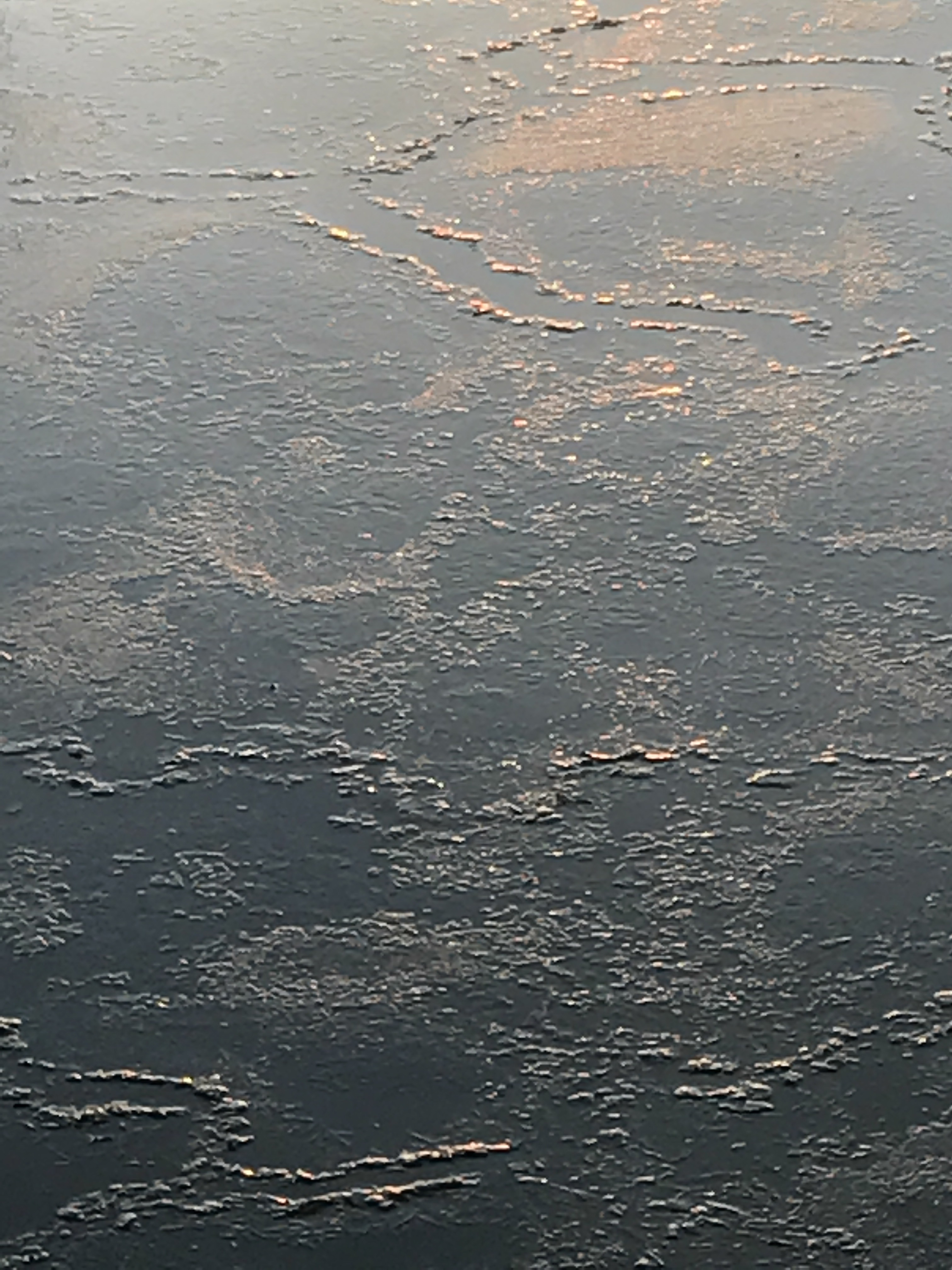
If the wave action isn’t too bad, those pancakes can freeze together, forming a closed ice cover.
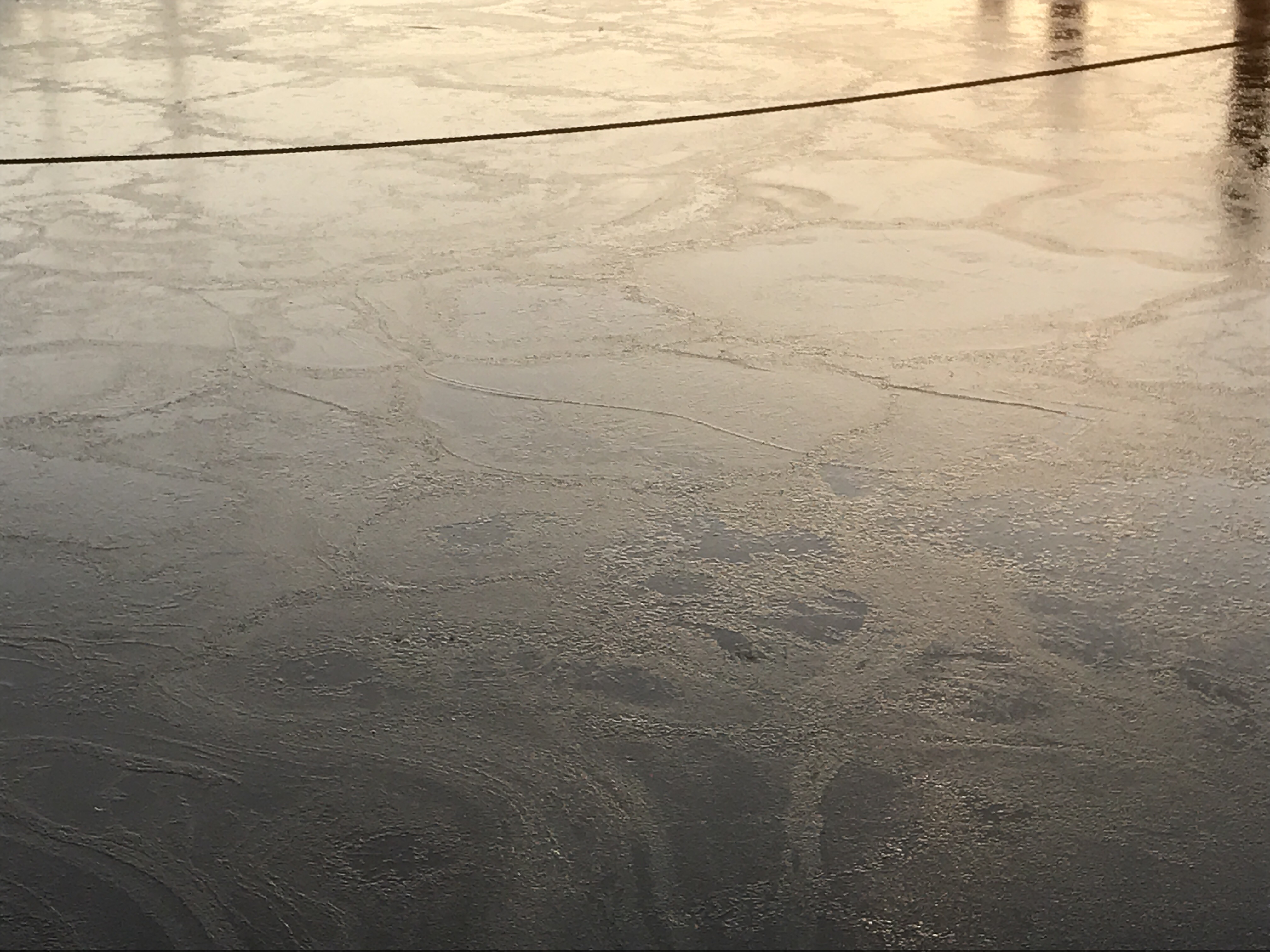
Sometimes you can also see several stages at once, like in the picture below: Open water out on the fjord, slush a little further in, then smaller pancakes and then larger pancakes. Not very surprising: Most wave action in the middle of the fjord, and the further you get towards the shore, the more waves have been dampened by the ice, so the larger the ice floes can grow.
Here you can actually see waves going through the ice-covered area, giving you an idea of how flexible the pancakes still are. More on that in the next post… ;-)
Here you see all the stages in one pic again. Together with the raising sun it makes for very pretty pictures! :-)
Desublimation: When water vapour freezes to ice without becoming liquid in between
One of my favourite phenomena right now is desublimition, or deposition: The phase transition of water vapour to ice that doesn’t go through the liquid phase. It happens when moist air is cooled below the dew point and condensation doesn’t occur spontaneously: When the supercooled water vapour then gets in touch with a cold surface, it turns to ice immediately. And the results are incredibly beautiful!
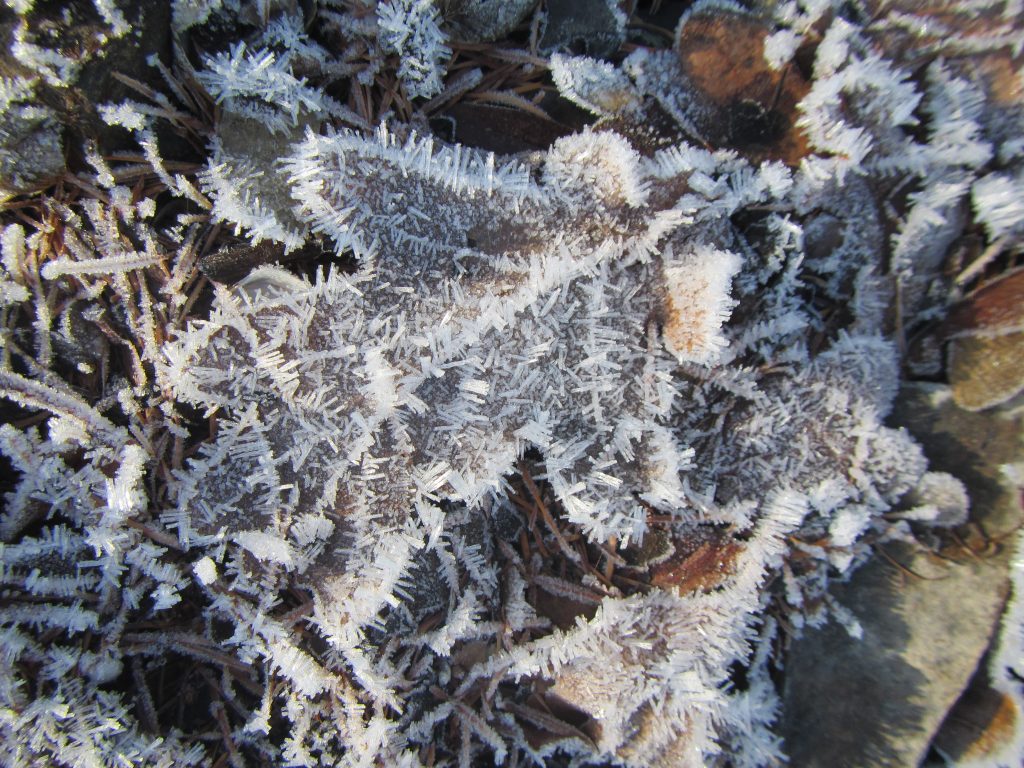
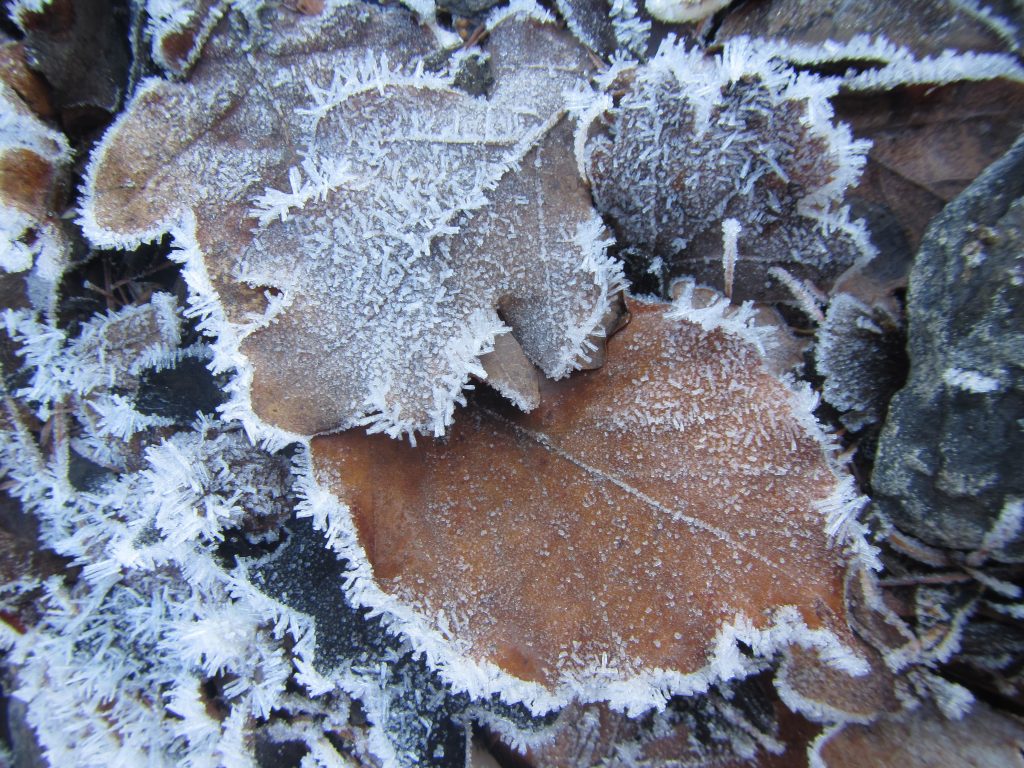
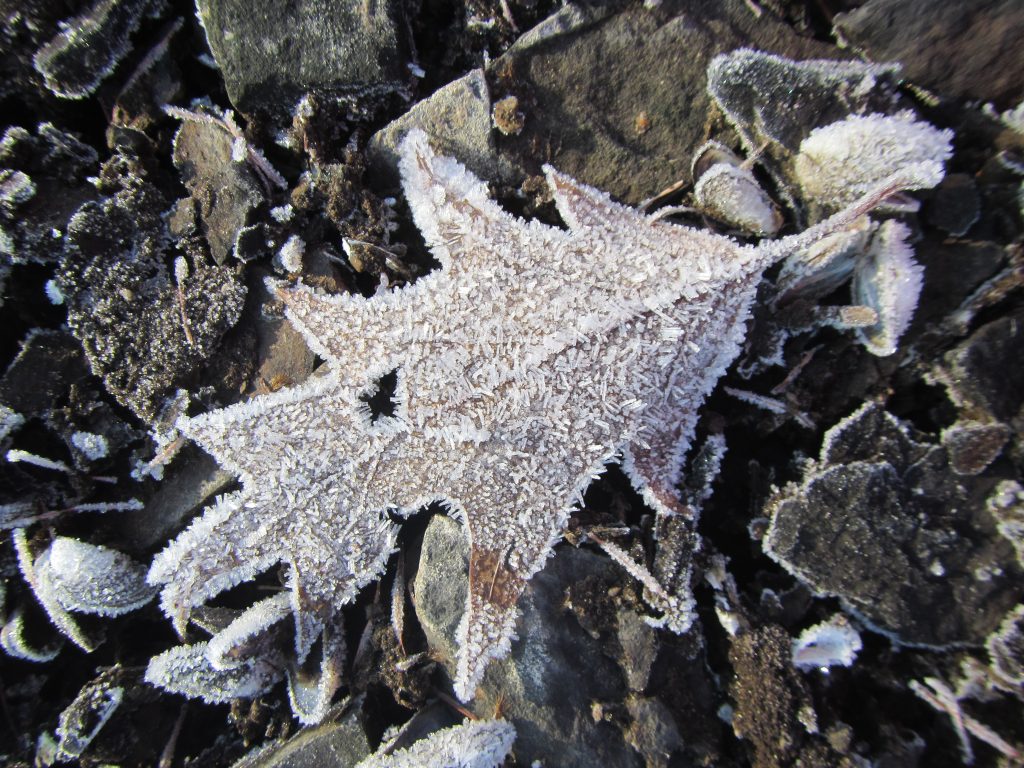
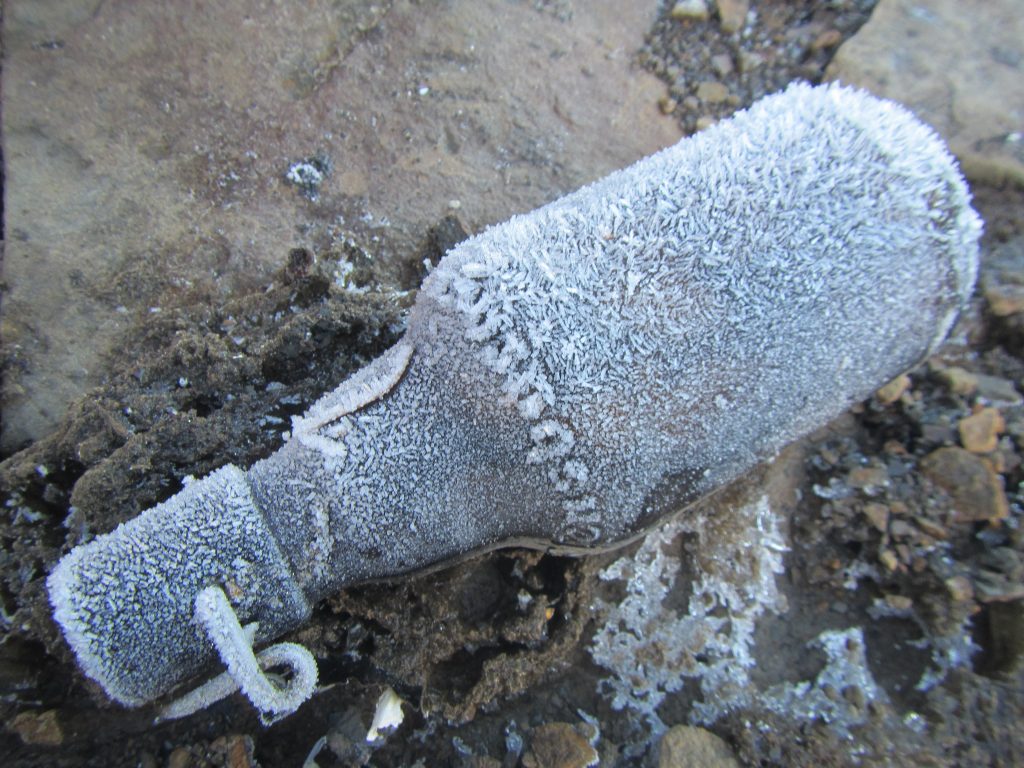
These pictures are all from a trip I took with my godson and his family to Möhne Reservoir, the largest artificial lake in western Germany. You can see we were actually on a shore: What a surreal mixture of shells, leaves and frost flowers.

And we initially just wanted to go over and have a look at the fog that we saw across the Reservoir from where we were throwing stones in the water…
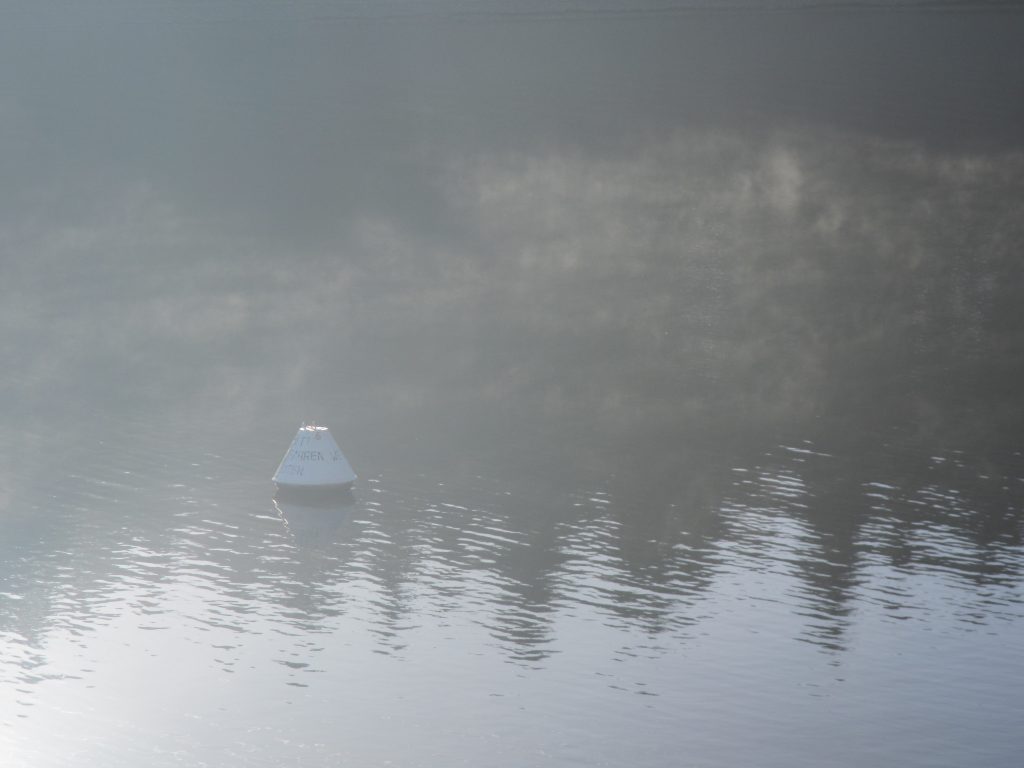
Getting closer, we were almost afraid that we’d encounter dementors there. We could feel it getting a lot colder, and there was frost on the shore and ice on the water… Spooky :-)

Shelter from the storm
Shelter from the storm, no, shelter from the breeze.
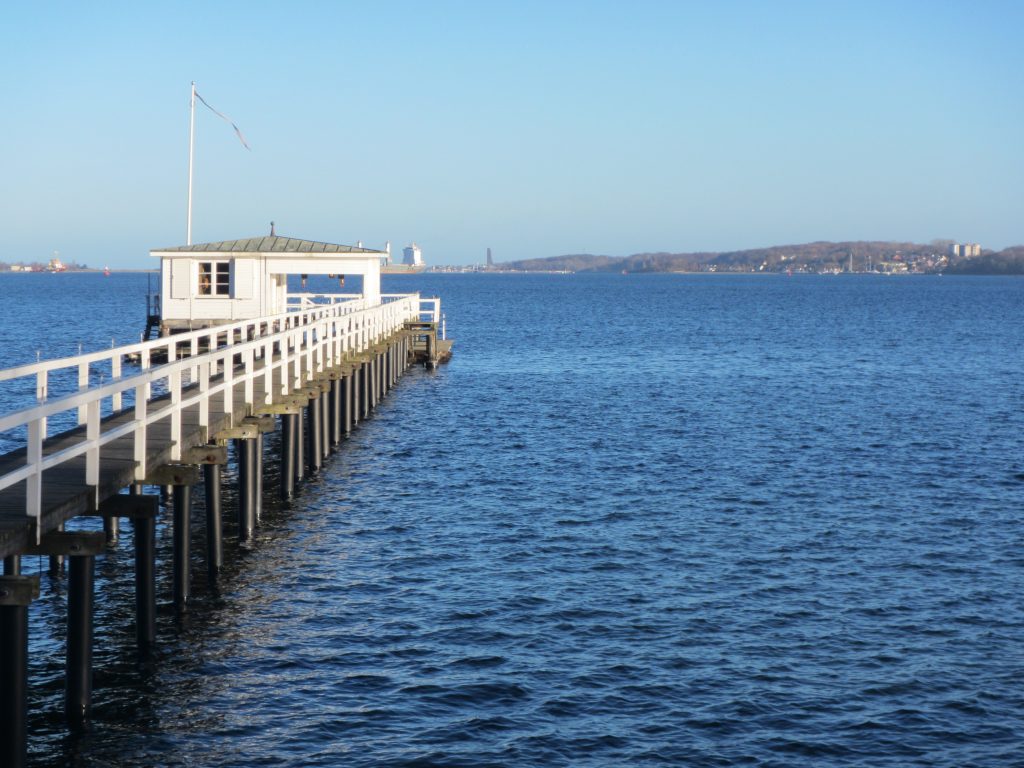
But we clearly see the sheltering effect of that boat shed on the wind waves… Same thing below. And wasn’t that a beautiful day :-)
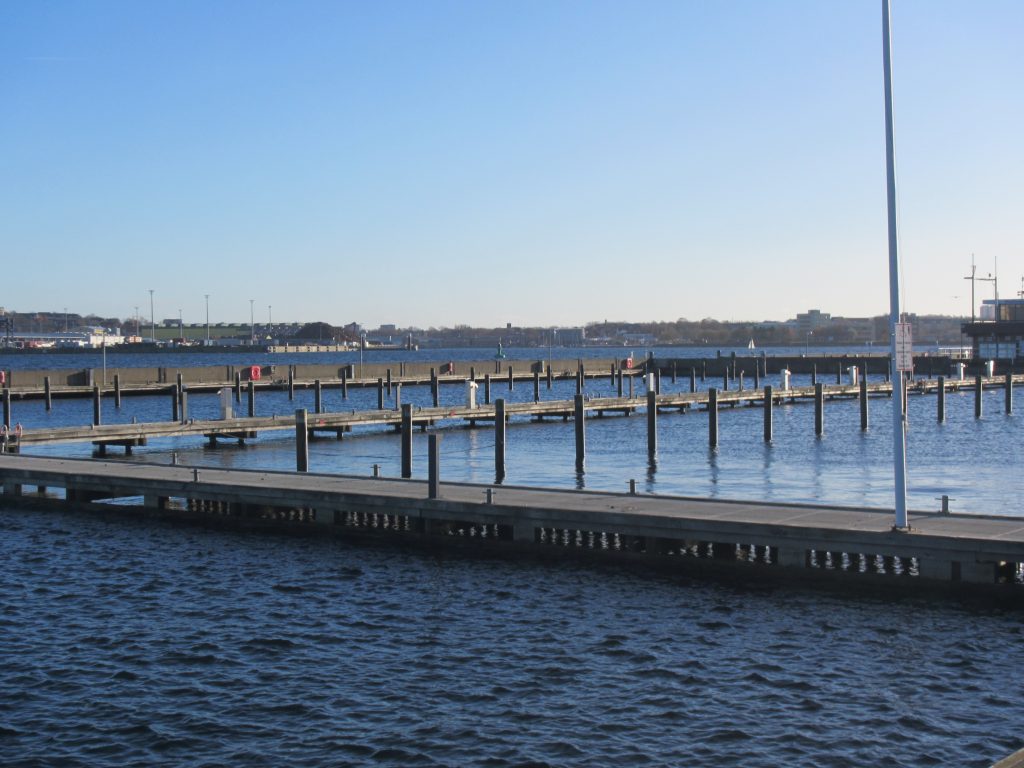
Wind waves
No matter how often I’ve seen it, I still find it absolutely fascinating how the tiniest structures can have a really visible effect on the downwind wave field. Like for example that pier below, leading to the little hut at the end. There is probably a meter and a half between the water surface and the gangway, which is propped up on really thin pylons. Yet, you clearly see that there are visibly fewer waves downwind of the structure. And the hut itself shades a huge area from wind.
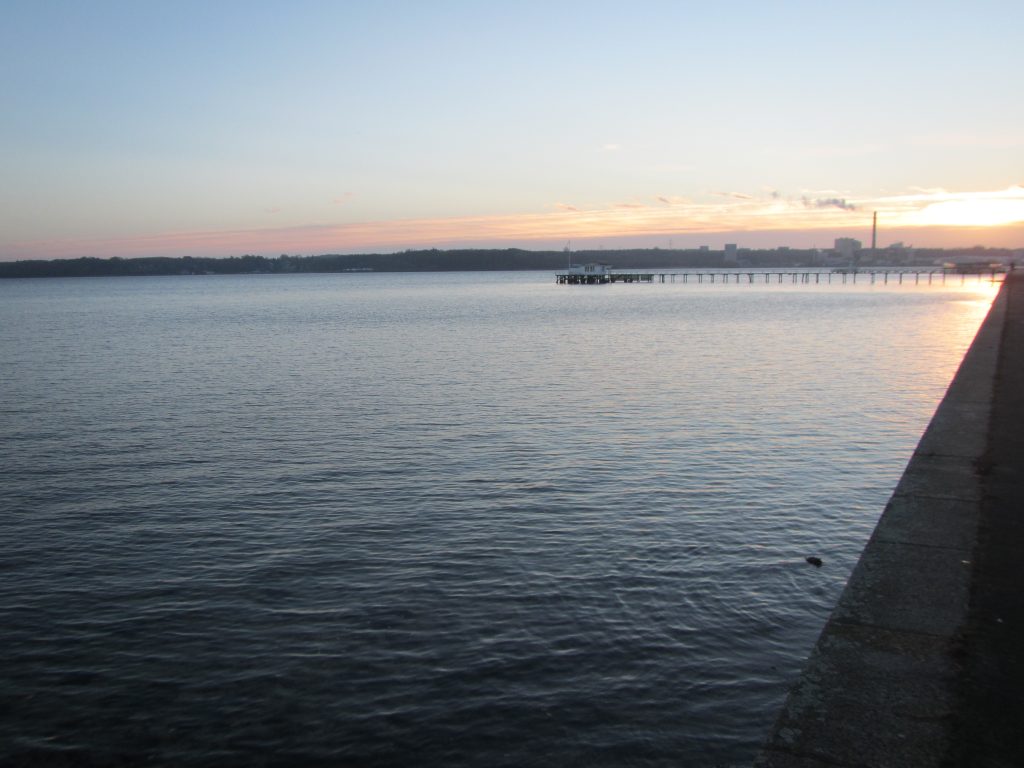
This kind of stuff is so cool to watch! :-)
Refraction of light in moving water — why stuff seems to be jumping around
I was waking along Kiel fjord one morning and noticed a stone “jump” on the ground as waves went over it (and actually, that observation was the motivation to dive into stuff from the last post, too).
I think the stone only looked so curious because the rest of the ground was uniformly sandy and hence didn’t seem to move.
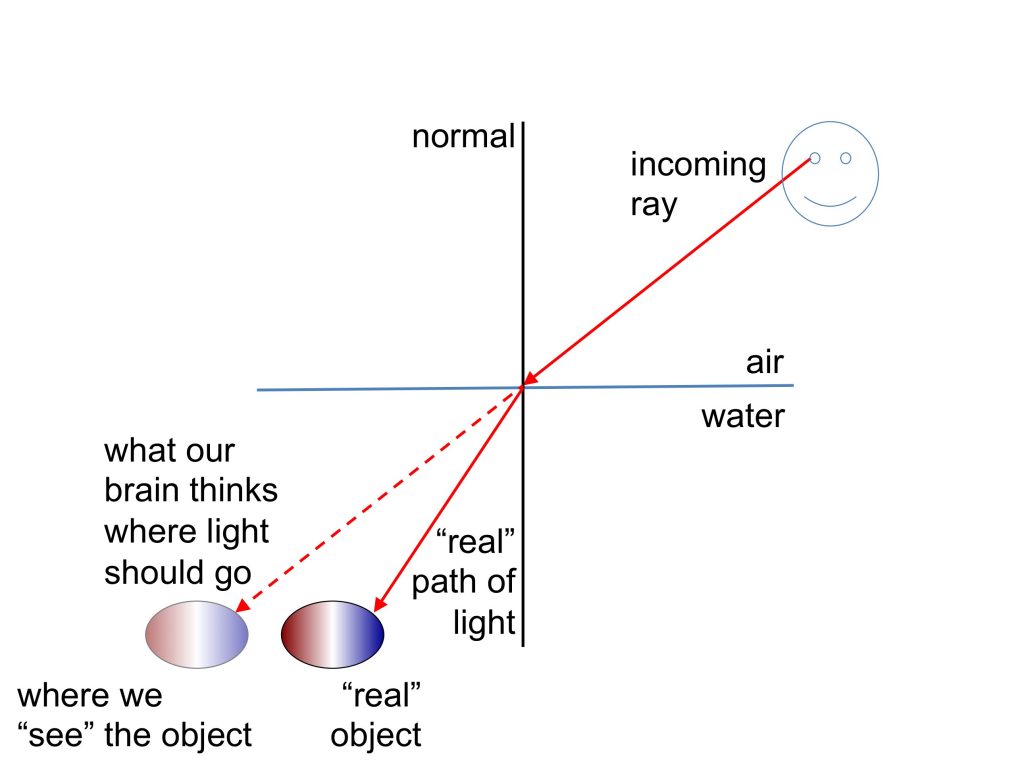
So seeing that jumping stone made me want to draw the optical path, which I’ve animated for you here:
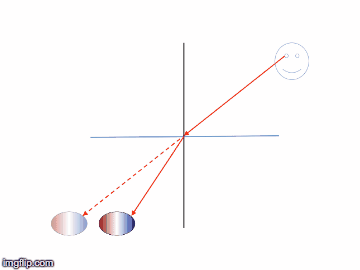
Funny. I think in physics class in school, I would absolutely have hated it had I gotten the task to draw all those different diagrams, and here I really enjoyed it. Maybe because of that jumping stone? Would the right motivation have helped me as a kid to get interested in this? I think it wasn’t that I was not interested in physics, but it would never have occurred to me to sit down on my own to sketch optical paths or anything like that. Now if I could figure out what changed for me, maybe we could use that to make other people interested in physics, too?
Refraction of light in water — looking at a couple of examples
Looking at how light gets refracted when it enters water is always fascinating. There are a dozen blog posts on the topic on this blog alone, but let me talk about it again today.
In a 1908 article, Charles Judd (as summarised in Barnett & Ceci, 2002) describes an experiment where kids throw darts at a target submerged under water. Half of the kids, in addition to practicing throwing darts, are taught about refraction of light in water. While all kids do equally well on the practice task, the kids that understand the physics do a lot better when the water depth was changed. Why?
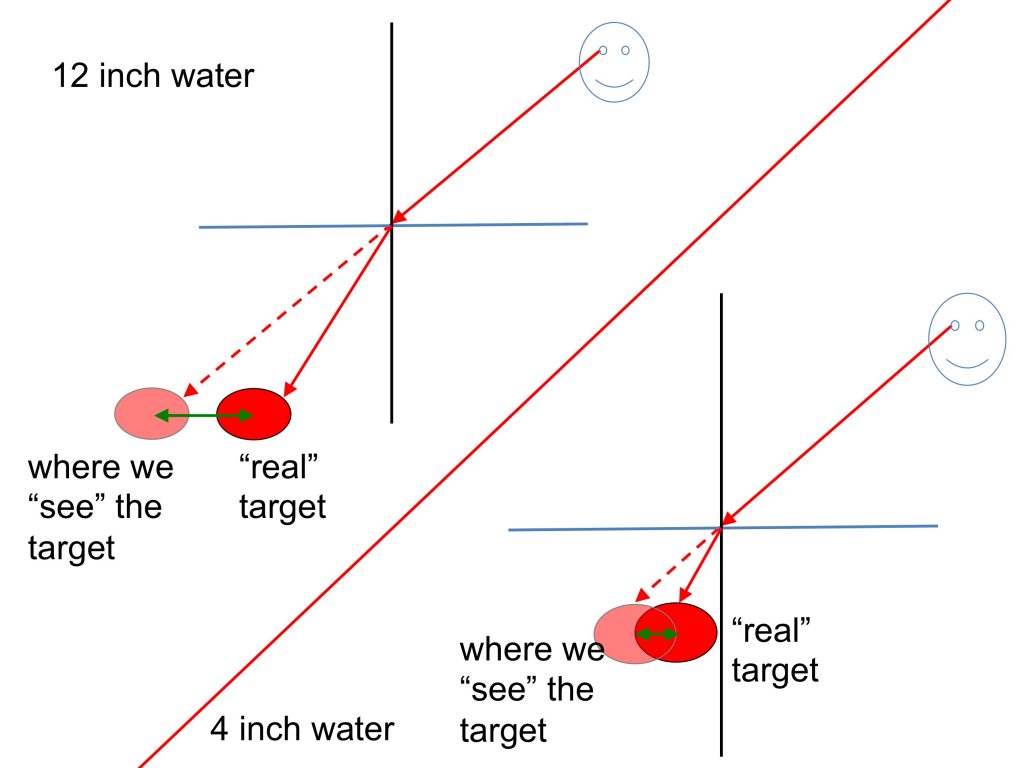
When the water depth changes, the target appears to be located in a different position than before. With shallower water, the target we see is a lot closer to the real location of the target. So kids that did not understand why they had to aim at a position off the target they saw to actually hit the target had a much harder time adjusting the way they aimed than those kids who actually understood what had changed.
But refraction is always cool to look at, even without throwing stuff. Here a picture from one of my very first blog posts (still in my house in Norway).
Or from this blog post — a fountain in Sheffield:

Or a swimming pool in Lüneburg that appears a lot shallower than it actually is (from this blog post).
Or a table that gets completely deformed when seen through a glass of water (from this post).
Is it only me or do other people sometimes also draw optical paths just for fun? ;-)
Those foam stripes parallel to the coast — again!
I think I might be getting obsessed with those stripes parallel to the coast. We saw them as foam stripes, eel grass stripes and now today: leaf stripes!
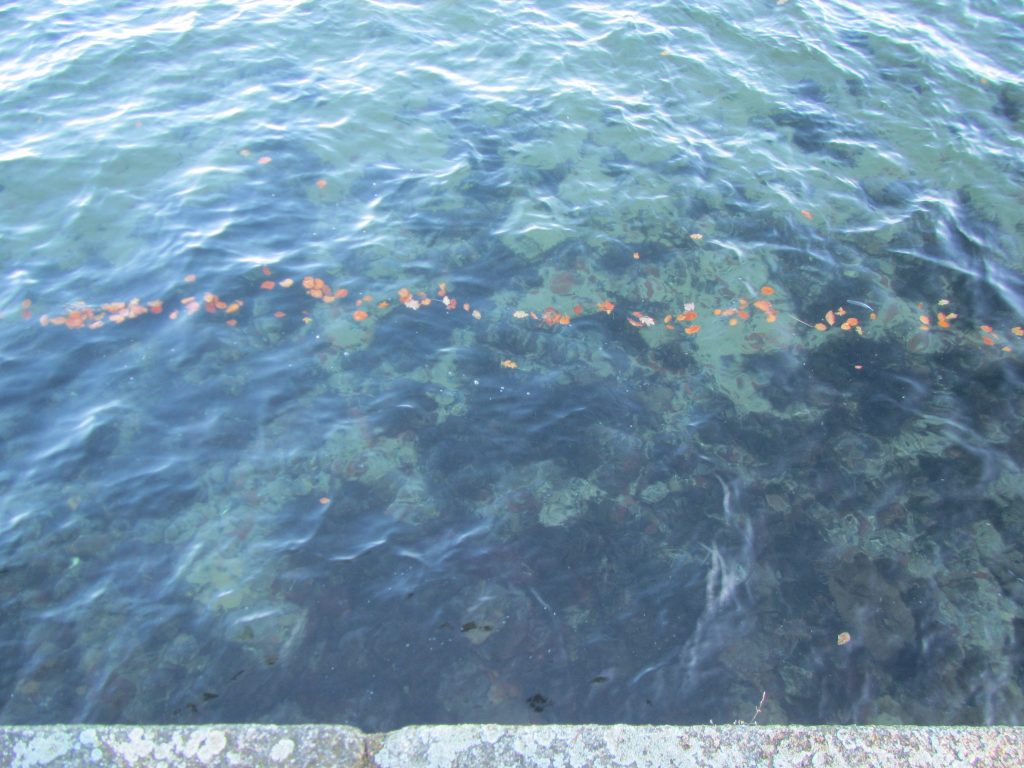
Or should it be leaves stripes instead of leaf stripes?
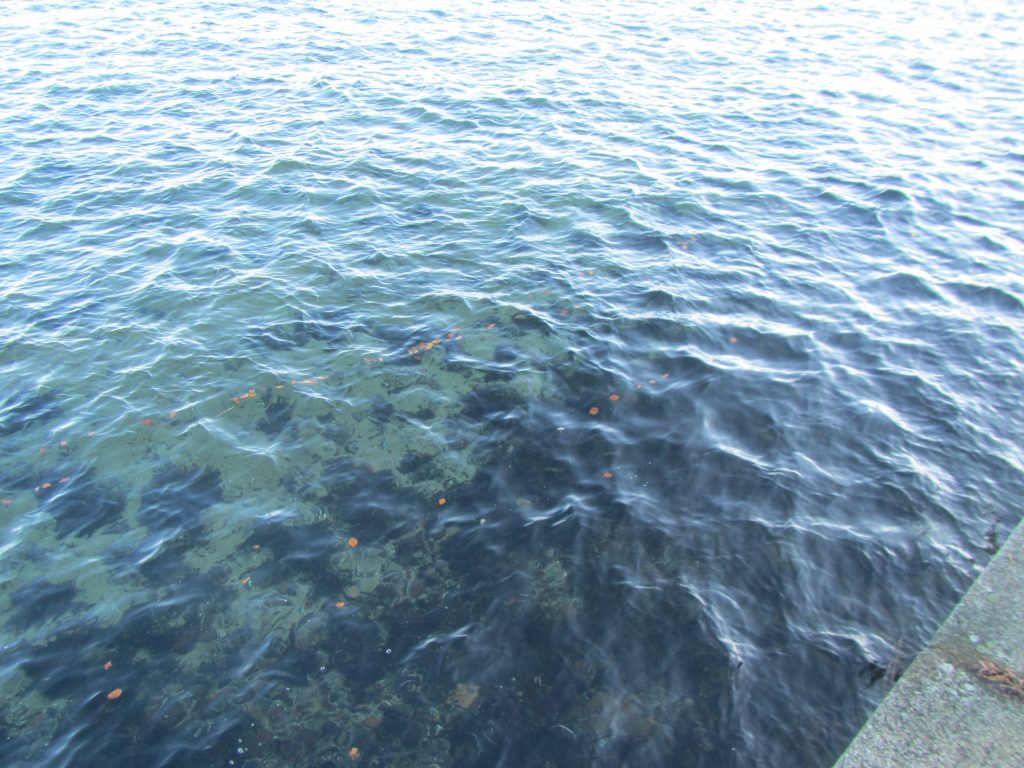
Interestingly enough, that day there wasn’t just one stripe, but in some places there were even two. It’s a little difficult to see in the pictures, but it was very clear in person.

See?

A little further downwind foam also appeared, but only inshore of the innermost leaf stripe.

And then a little further downwind, several parallel foam stripes appeared. Now this I could imagine being Langmuir circulation. And all the other stripes must be on individual convergence zones, too?
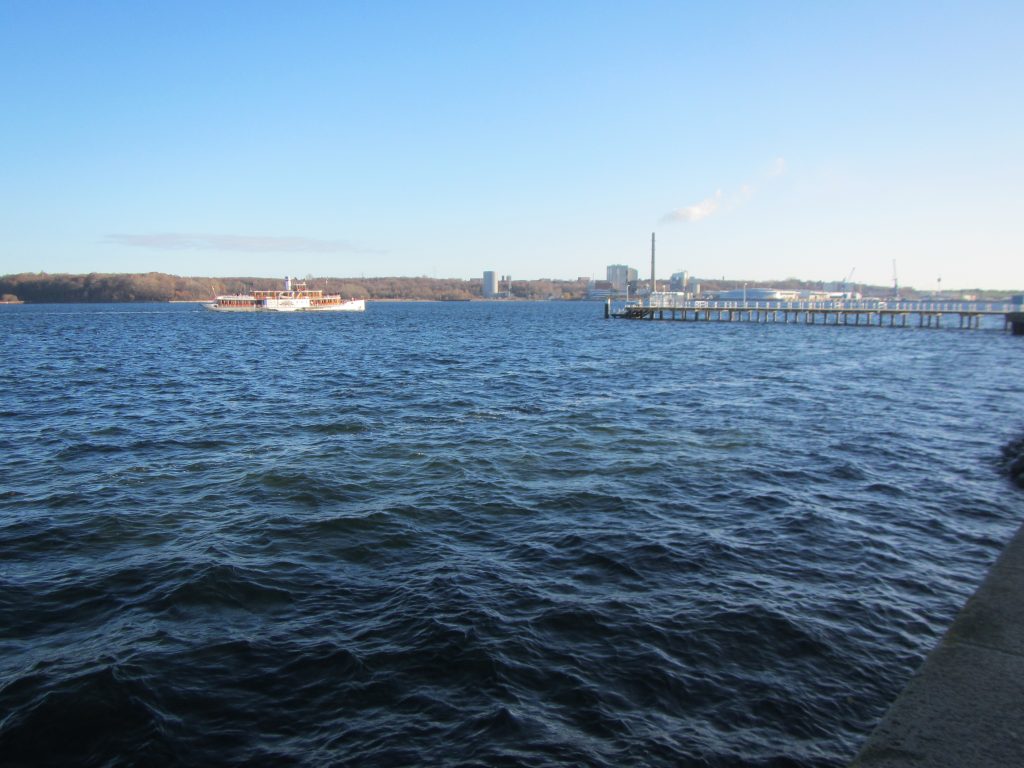
Someone should hire a PhD student to figure this out, it is really bugging me that there is a phenomenon that we can observe pretty much every time we look at Kiel fjord, yet I can’t find anything on what is going on there.
Luckily, the day I took those pictures, my famous oceanographer friend J was with me, and it was bugging her almost as much as it was bugging me :-) We decided the most likely explanation was that someone had pulled all those leaves on thin strings and put them out in the water just to see whether someone would notice…
Interference of one wave field with its reflection and a second wave field
All you regular readers of my book and my blog surely recognize what’s going on below?
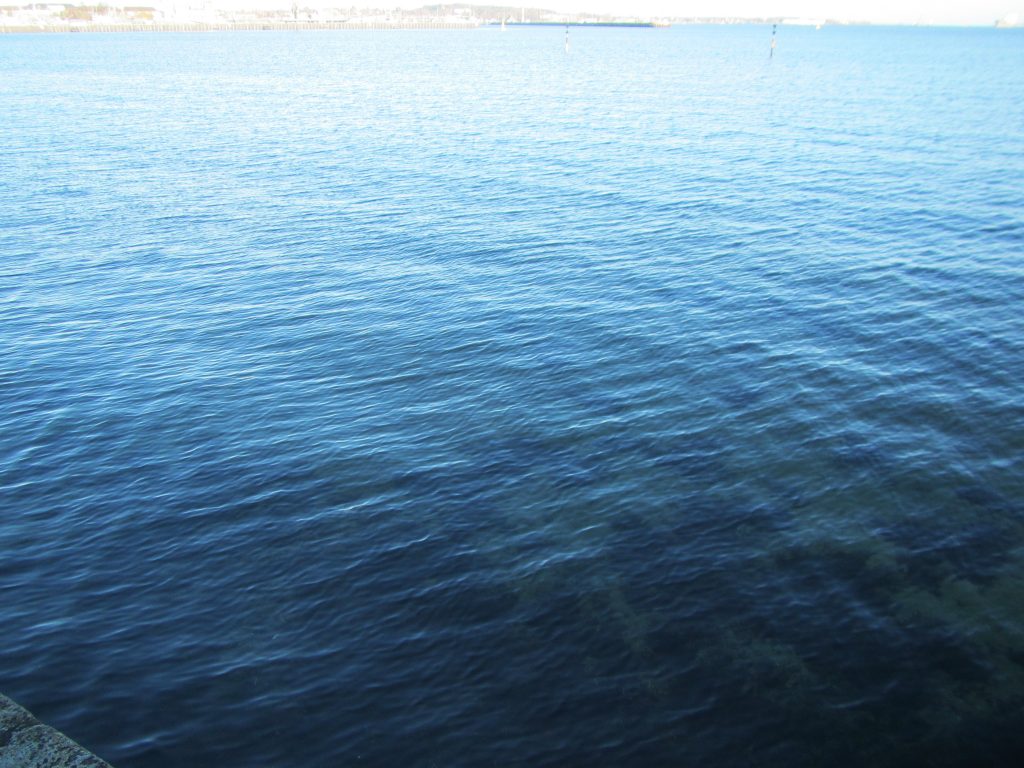
Yes! A wave field comes in at an angle to the pier and gets reflected, leading to a chequered pattern. And a second wave field comes in with wave crests pretty much parallel to the pier, adding a little more interest to the pattern.
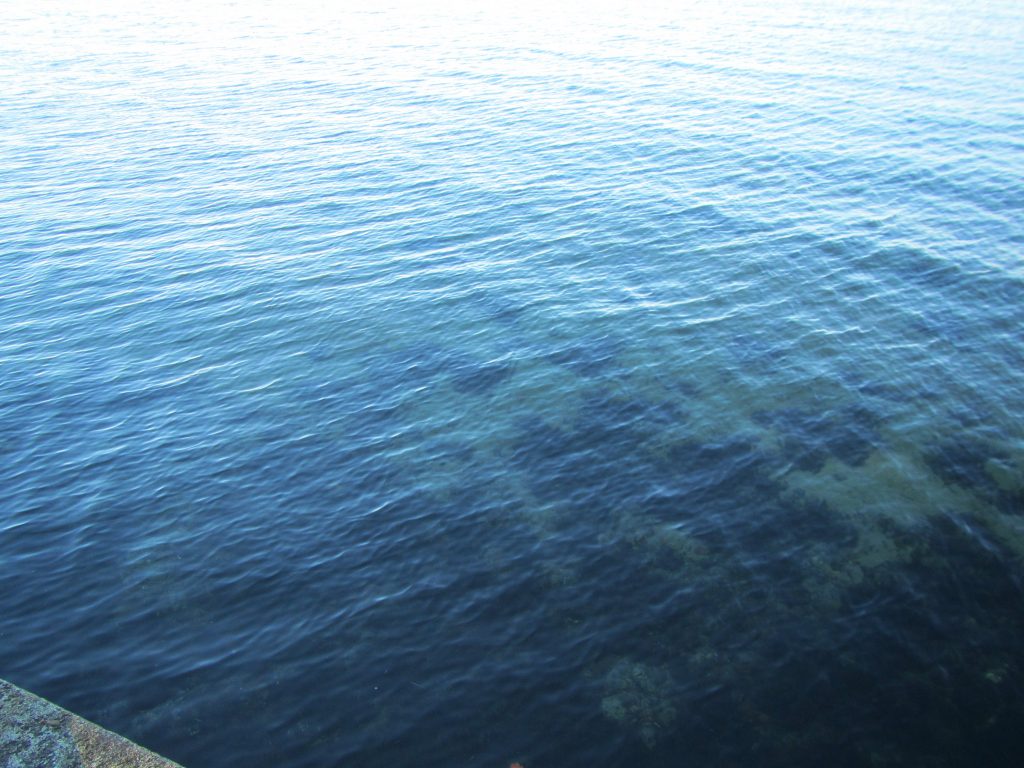
I love watching these kinds of waves! But it is really difficult to take good pictures. Sorry about the over-exposed background…

But it is so beautiful!
